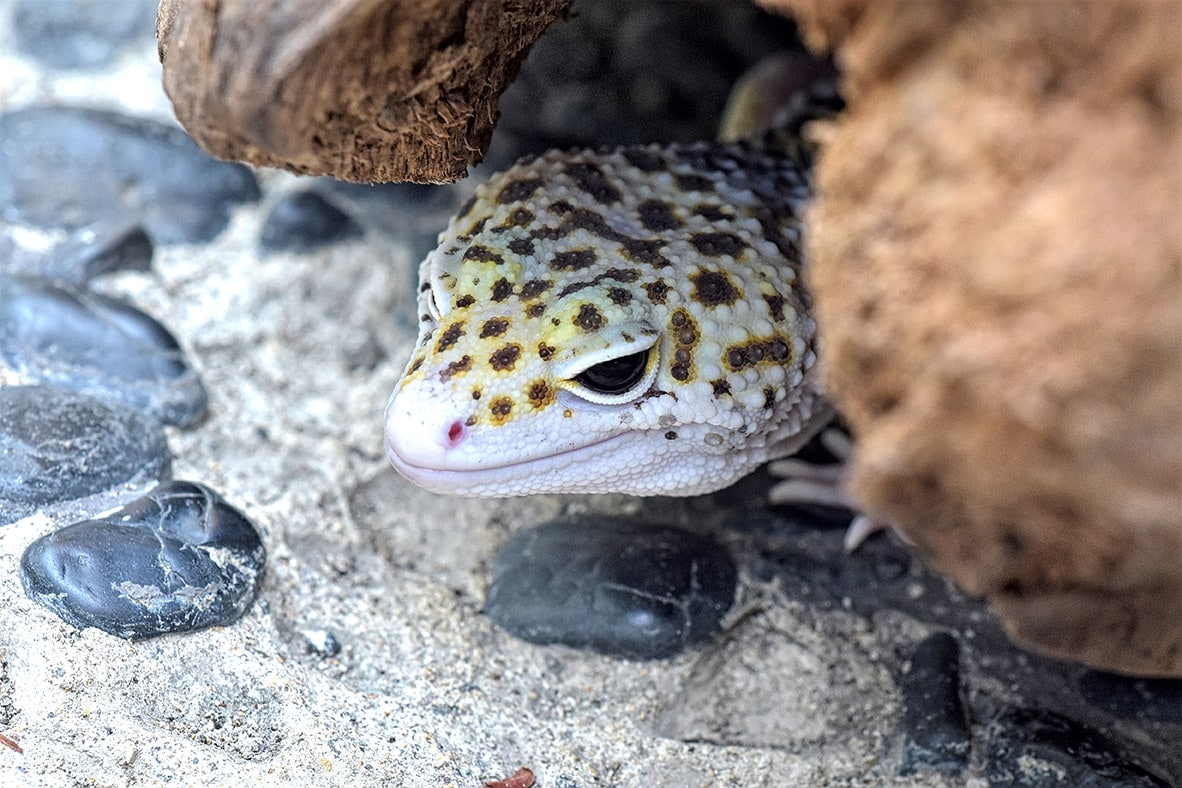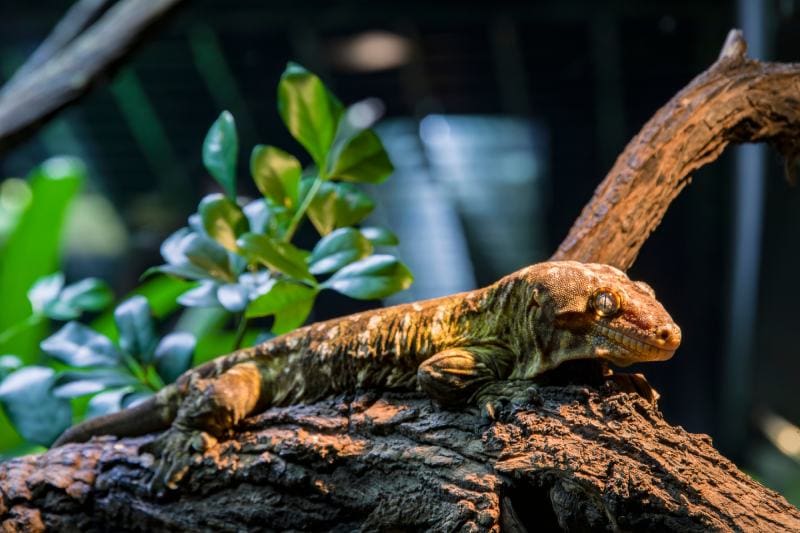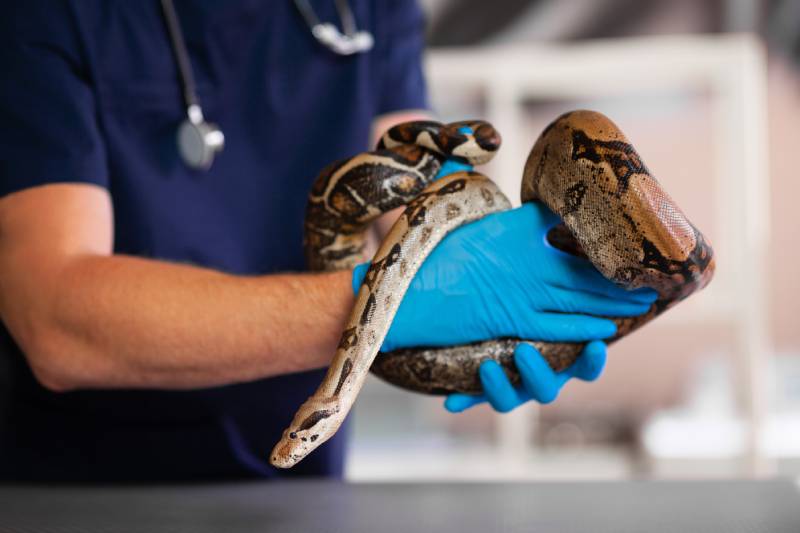Click to Skip Ahead
Are you a responsible pet owner who does your homework before bringing a cool pet home like a leopard gecko? If so, you know that it’s important to provide your new pet with the right environment to live a happy and healthy life.
Setting up a perfect leopard gecko habitat is more complicated than just putting a few rocks and a light bulb in a tank. The Leopard gecko has very specific needs that must be met to ensure its health and survival.
Leopard gecko hides are dedicated places where your lizard can feel safe and comfortable. They are where the gecko can rest, sleep, and hide from other pets and people. Reptiles like Leopard geckos can easily become stressed living under human care, which can create health and behavioral problems.
A stressed Leopard gecko may not eat well or be able to reproduce. Before we get into telling you how to make a moist hide for a leopard gecko, it’s essential to understand why it’s required in the first place.

Why Is a Moist Hide Necessary?
Native to hot and dry places like Pakistan, Iraq, Iran, India, and other Asian countries, Leopard geckos thrive in deserts. While it’s true that they live in hot and dry environments, it doesn’t mean that they don’t require humidity. The desert environments where geckos live are made up of more than hot, dry sand. Stones and rocks also provide them with cooler and darker places to hide.
In the Leopard gecko’s natural environment, within the cracks and crevices of rocks and stones, the humidity level ranges from 70%-80% during the summer months and 60%-70% during the winter. Leopard geckos need moist holes to hide in and thrive.
Just like humans need water to regulate their body temperature, a Leopard gecko needs a moist environment to regulate their body temperature. The optimal temperature in a moist hide is between 83 and 90 degrees Fahrenheit.
A Leopard gecko kept as a pet needs a moist hide to shed properly and to lay eggs. When your pet needs to shed their skin, they will go to the moist hide because the humidity will soften the skin for easy shedding.
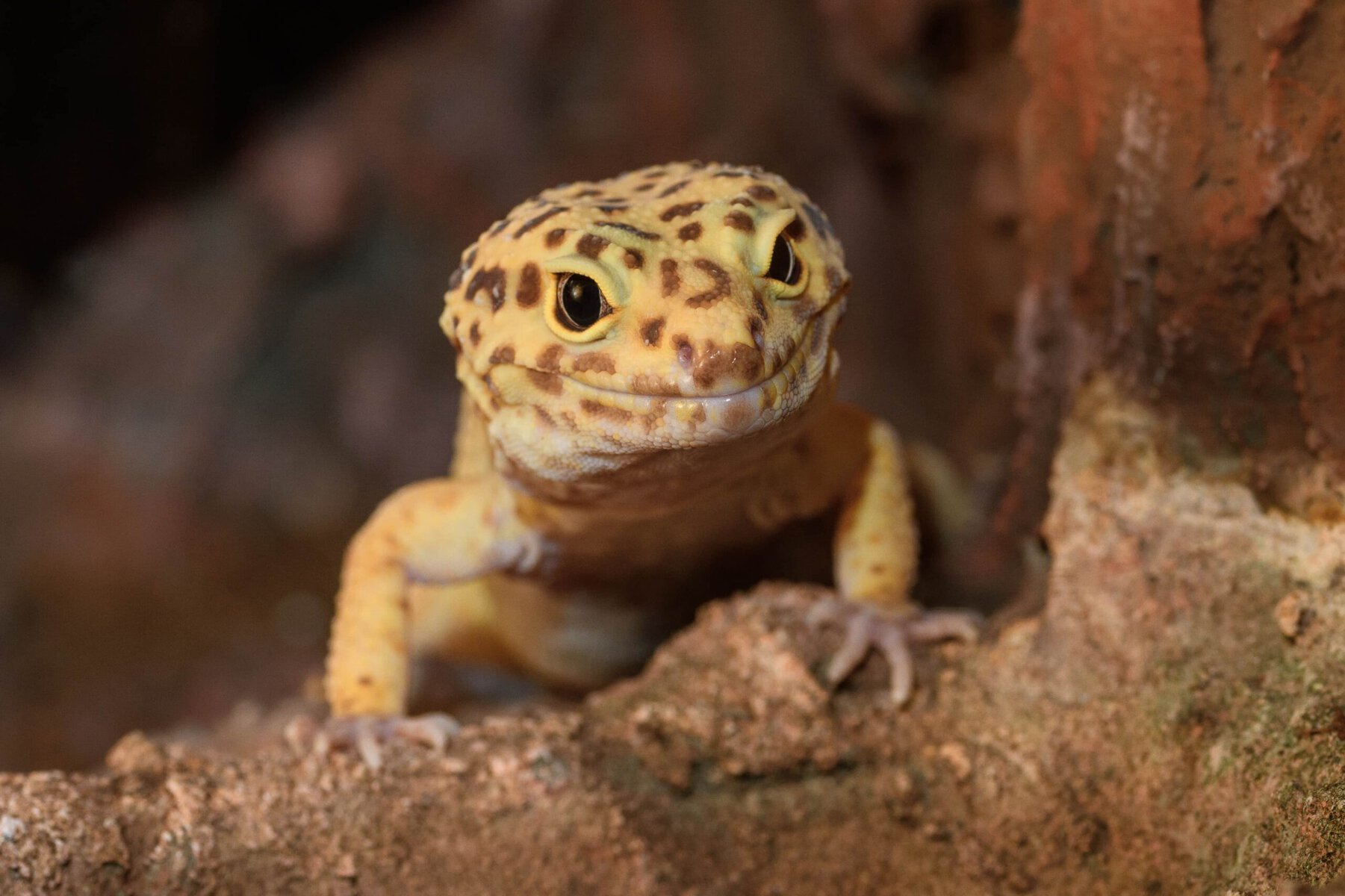
Making a Moist Hide
You can make a moist hide using a common household object like a small box, plastic container, or a planter pot. An excellent object to use is a coconut shell that’s been hollowed out. A coconut shell is a natural object that can be more appealing to your gecko. Whichever item you choose to use for the hide, just be sure it is large enough for your lizard to move around inside comfortably.
Once you’ve selected the object to use for your moist hide, cut an opening in it so your gecko has easy access to it. To ensure that your gecko doesn’t get injured, don’t leave sharp edges on any part of the moist hide, especially the entrance/exit.
The moist hide should be large enough for your lizard to move around inside with ease. If you have more than one gecko, you will need to make a larger hole in the hide. The general rule of thumb is to make a moist hide two to three times the size of the reptile.

Choosing the Right Substrate
Your Leopard gecko will spend a lot of time in the moist hide. That’s why it’s essential to choose a proper substrate. While many novice gecko owners use damp paper towels as substrate, they are not the best choice. A Leopard gecko will not lay eggs on the wet towels, increasing the risk of egg binding.
Sphagnum moss is a good substrate for a moist hide. Since you’ll have to mist the moss with water, it can develop mold if kept too wet. Don’t over-soak the moss; keep track of your misting, and change the substrate if it’s becoming moldy.
Placement of the Moist Hide
It’s important to place the moist hide on the cool side of the tank, away from the heat. That way, the heat cannot cause fast evaporation of the moisture inside the hide, which can lower the humidity levels.
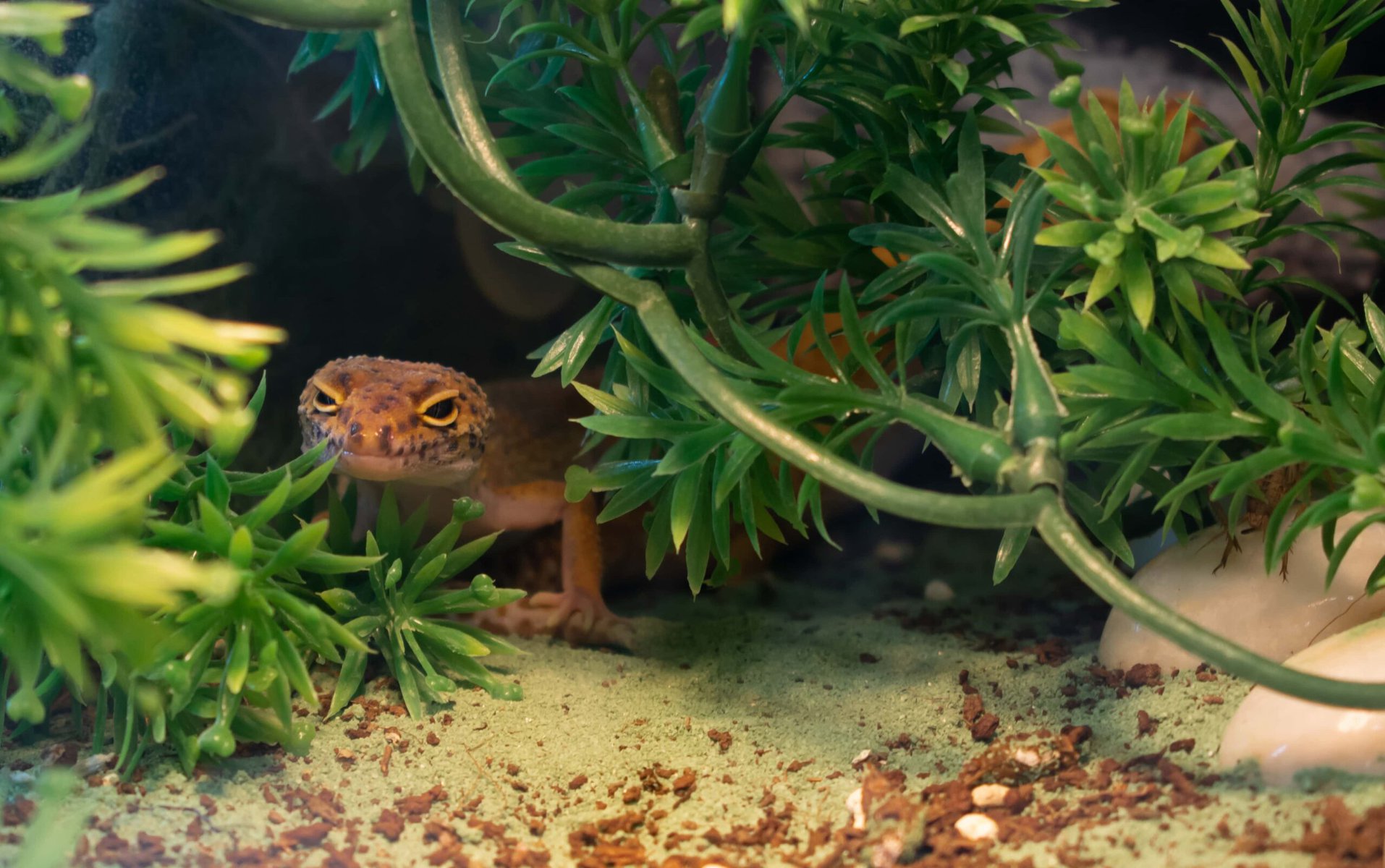
Cleaning the Hide
Now that you know how important a moist hide is for a Leopard gecko, it’s vital that you keep it clean. A good rule of thumb is to clean the hide every time you clean the tank. Use warm, soapy water to clean the hide, and be sure to rinse the hide well after scrubbing away the dirt and grime.

Final Thoughts
When making a moist hide for your Leopard gecko, focus on creating a comfortable habitat that your pet can get in and out of easily. Be sure there’s enough room inside for your reptile to move around and play and the substrate inside the hide is moist. Don’t forget to clean the hide when you clean the rest of the tank!
Featured Image Credit: TUFADUM, Shutterstock
